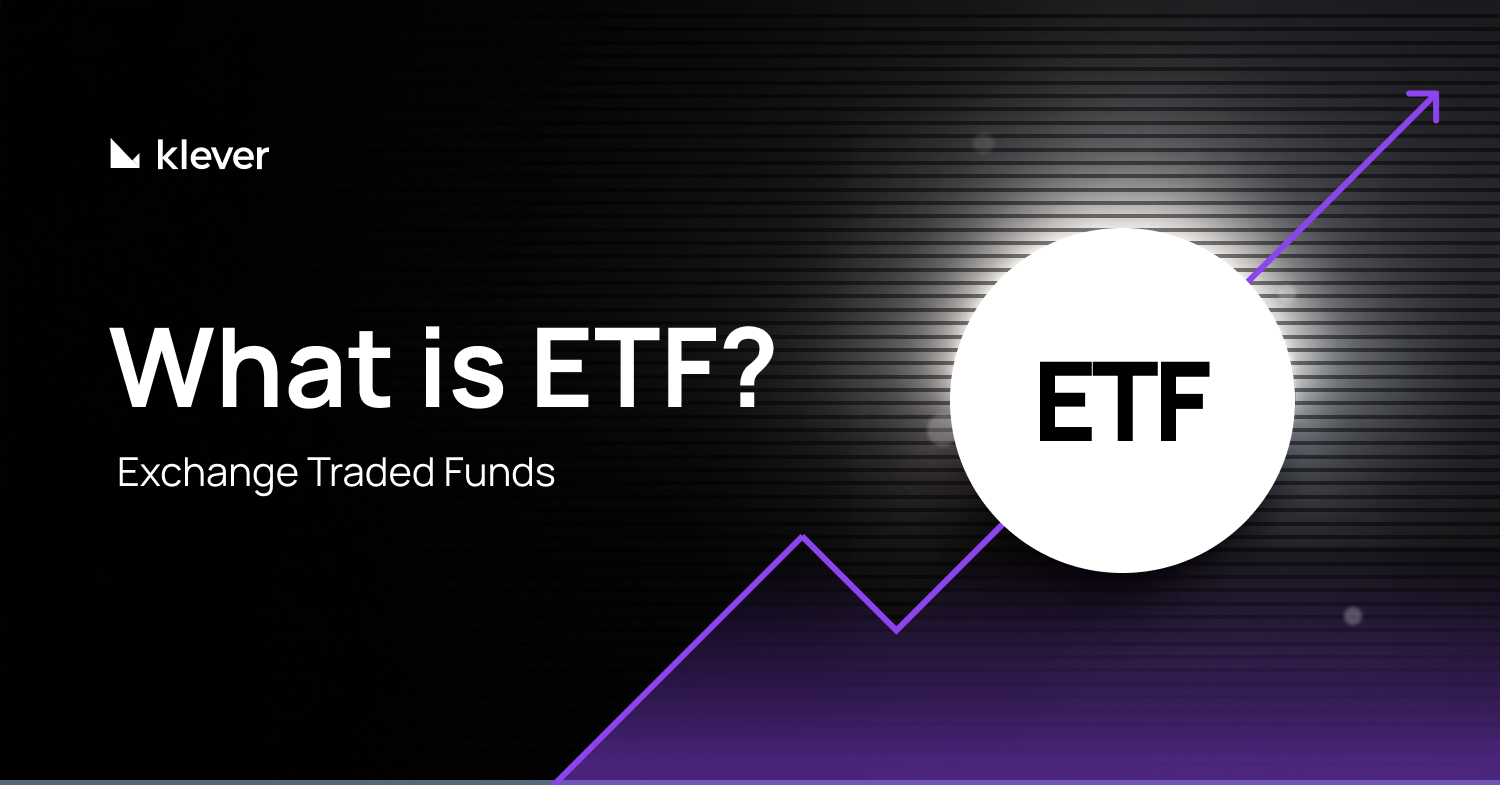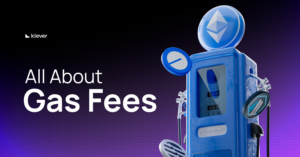
ETF stands for Exchange-Traded Fund — a flexible, accessible way to gain exposure to a wide range of assets, from stocks and bonds to commodities and now, in 2025, even cryptocurrencies.
ETFs have become one of the most popular tools in modern finance because they’re simple to use and easy to understand: they trade on stock exchanges just like individual stocks, but instead of representing one company, an ETF can track an entire index, sector, or asset class.
Now, this same structure is transforming the way people get involved with crypto.
How Does an ETF Work?
Think of an ETF as a basket of assets. When you buy shares in an ETF, you’re buying a slice of that basket . Whether it’s made up of tech stocks, bonds, gold, or even digital assets like Bitcoin.
Why ETFs are widely used
- Diversification: Access multiple assets with one purchase.
- Liquidity: ETFs can be bought and sold throughout the trading day.
- Lower costs: Most ETFs have low fees compared to traditional mutual funds.
- Transparency: Most ETFs clearly list what they hold.
From Stocks to Crypto: The Rise of Crypto ETFs
Originally built for stocks, ETFs have expanded. In 2024, crypto took a major step into mainstream finance when regulators approved the first spot Bitcoin ETFs. This allowed people to access the price movements of Bitcoin without having to buy or store the cryptocurrency directly.
Now in 2025, crypto ETFs are reshaping how people participate in the digital economy.
Next, let’s dive into how crypto ETFs work, and why they’re different from buying Bitcoin or Ethereum yourself.
How Does a Crypto ETF Work?
A crypto ETF lets you follow the price of cryptocurrencies like Bitcoin, Ethereum, or Solana — without having to buy, store, or manage the coins yourself. It’s designed for those who want to participate in the crypto market through familiar financial tools, like a regular brokerage account.
Let’s break it down.
Spot vs Futures Crypto ETFs
There are two main types of crypto ETFs — and they work very differently.
1. Spot Crypto ETFs
These are backed by actual cryptocurrency.
For example, a spot Bitcoin ETF holds real Bitcoin in secure custody. When Bitcoin’s price goes up or down, the ETF’s value moves with it. You gain exposure to Bitcoin’s price, but not custody of the Bitcoin itself.
2. Futures Crypto ETFs
These track Bitcoin futures contracts — agreements to buy/sell Bitcoin at a future date. Futures ETFs don’t hold real Bitcoin, and their price can sometimes move differently than spot prices, especially in volatile markets.
So, What Do You Actually Own?
When you buy a crypto ETF, you’re buying shares of a fund, not the crypto itself. You:
- Do not receive crypto in a wallet.
- Do not hold private keys.
- Do not control the underlying asset.
Instead, the fund holds the crypto (or futures contracts) for you and takes care of security, custody, and storage.
Crypto ETF vs Buying Crypto: What’s the Real Difference?
At first glance, crypto ETFs and buying crypto directly might seem similar — both let you benefit from price movements. But what’s happening behind the scenes is completely different.
It all comes down to ownership vs exposure:
When you use a crypto ETF
- You trade shares of the fund, not the actual crypto.
- You cannot move the crypto, use it in DeFi, or withdraw it to a wallet.
- Your profits/losses follow the price of crypto, but you never touch the asset.
- For many users, that’s the point — exposure without complexity.
For many users, that’s the point — simple exposure without the complexity of direct ownership.
When You Buy Crypto Directly
- You own the asset and have full control over it.
- You need a crypto wallet and manage private keys.
- You can use your crypto in DeFi, staking, swaps, or move it anywhere.
- You’re responsible for security — lose your keys, lose your funds.
- No central authority — you’re in charge.
You hold the power — but also the responsibility.
| Feature | Crypto ETF | Buying Crypto Directly |
|---|---|---|
| Ownership | You own shares of a fund | You own the actual crypto |
| Custody | Managed by the ETF provider | You manage it (wallet, private keys) |
| How to Access | Through a stock exchange or broker | Through a crypto exchange or wallet |
| Security Responsibility | ETF provider secures the assets | You’re responsible for security & backups |
| Price Exposure | Tracks the price of crypto | You hold the asset and its full value |
| Use in DeFi or dApps | Not possible | Full access (staking, DeFi, swaps) |
| Regulation | Heavily regulated (SEC oversight) | Varies by exchange; less regulated overall |
| Ease of Use | Simple — no wallets or tech skills needed | Requires setup, understanding of wallets |
Which One’s Better?
It depends on what matters most to you:
| If You Want… | Go With… |
|---|---|
| Simplicity & traditional access | Crypto ETF |
| Full control & flexibility | Buy Crypto Directly |
| Regulated environment | Crypto ETF |
| DeFi, staking, on-chain use | Buy Crypto Directly |
Some people even use both — ETFs for long-term exposure, direct crypto for more active, hands-on use.
Is It Safe to Use a Crypto ETF to Hold Digital Assets?
One of the biggest reasons people choose a crypto ETF over buying crypto directly is peace of mind. You don’t have to worry about wallets, passwords, or private keys, the ETF provider handles all of that.
But is ETF actually safe?
Let’s look at how it works behind the scenes.
How Crypto ETFs Are Secured
When you buy a spot crypto ETF, the fund holds real cryptocurrency in secure, institutional-grade custody, typically with trusted custodians like Coinbase Custody, Fidelity Digital Assets, or BitGo.
These companies use cold storage (offline wallets), insurance, and multi-layer security to protect the crypto held by the fund.
You’re not responsible for security — the ETF provider is.
Regulated for Safety
Crypto ETFs, especially in the U.S. are heavily regulated by the Securities and Exchange Commission (SEC).
This means:
- Regular reporting and audits
- Strict security protocols
- Oversight of fund operations and custody
- These regulations are in place to protect investors and make crypto exposure more transparent and accountable.
- What You Trade, What You Don’t
How Crypto ETFs Help the Crypto Ecosystem Grow
Crypto ETFs do more than offer easy access, they’re actively strengthening the crypto ecosystem with:
- Mainstream Access: ETFs let anyone gain exposure to crypto without needing wallets or technical skills, bringing more people into the space.
- Increased Liquidity: ETFs buying large amounts of crypto boosts trading volume and market stability.
- Trust and Regulation: Heavily regulated ETFs help legitimize crypto in the eyes of investors and regulators.
- Institutional Adoption: Big names like BlackRock and Fidelity are involved, bringing credibility and growth to the entire industry.
- In short: Crypto ETFs are helping crypto go mainstream, while building a more liquid and trusted market.
In short?
Crypto ETFs are helping normalize crypto, open it up to new audiences, and build a stronger foundation for the future of digital assets.
What’s Changed Since Bitcoin ETFs Were Approved in 2024?
The approval of spot Bitcoin ETFs in January 2024 marked a turning point for crypto.
Here’s what happened after:
- Massive Capital Inflows: Over $65 billion flowed into Bitcoin ETFs in 2024 alone, pushing Bitcoin’s price past $100,000 for the first time.
- New Market Participants: Thousands of new users entered crypto — not through wallets, but via ETFs.
- Mainstream Media + Financial Coverage: Crypto went from niche to headline finance news, accelerating awareness and interest.
The result? Crypto is now more visible, accessible, and recognized than ever before.
Are More Crypto ETFs Coming in 2025?
Yes — and fast.
- Ethereum Spot ETFs are under active SEC review. Approval would bring ETH to the ETF market just like Bitcoin.
- Altcoin ETFs (Solana, XRP, others) are being explored, though still early stage.
- Global Expansion: Countries like Canada, Australia, and Germany are expanding their crypto ETF offerings.
As regulation evolves, new ETFs will keep opening doors for people who want crypto exposure without owning the assets directly.
Crypto ETFs Simplify Access — Not Ownership
Crypto ETFs have made it easier than ever to follow the price of Bitcoin, Ethereum, and more — without needing to buy or manage the crypto yourself.
They offer price exposure through familiar, regulated platforms, but not ownership of the underlying assets.
For many, that’s the perfect balance of simplicity and security.
For others, owning crypto directly still offers the control and flexibility they want.
As crypto ETFs continue to grow, so do the options for how people engage with digital assets, and that’s a win for the entire space.
Want full control and security? Keep your crypto safe and accessible with Klever Wallet — where you own your assets, your keys, and your freedom.
Your crypto, your keys! Keep it Klever.
Download Klever Wallet and take control


